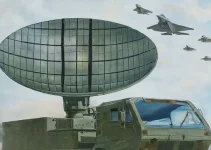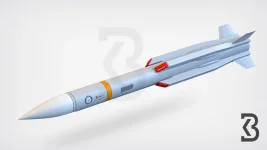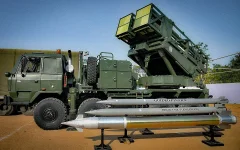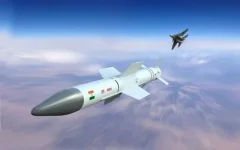- Views: 2K
- Replies: 5
India's Defence Research and Development Organisation (DRDO) has developed a new counter-drone system called the Jammer Anti-UAV (JAU), designed to protect against hostile unmanned aerial vehicles (UAVs).
The system, created by the Defence Research and Development Laboratory (DRDL) in Hyderabad, disables drones by interfering with their communication and navigation systems.
The JAU system is built to disrupt the two critical connections that drones rely on: the command and control (C2) link, which allows the operator to control the drone, and the navigation link, which uses satellite-based systems like GPS (Global Positioning System) or GLONASS (the Russian equivalent) to determine its location.
The JAU uses Electronic Support Measures (ESM) to find and identify drone signals across a broad range of frequencies. These frequencies often include 2.4 GHz and 5.8 GHz for drone control and the GPS L1 band (1575.42 MHz) for navigation.
Once a drone signal is detected, the system's Electronic Countermeasures (ECM) use targeted jamming, flooding the signals with electronic interference. This breaks the connection between the drone and its operator, and it also disrupts the drone's ability to know its position.
A key feature of the JAU is its "spoofing" capability. Spoofing goes beyond simply blocking signals; it involves sending out fake satellite signals that appear genuine. These false signals mislead the drone into accepting incorrect location or timing data. This can cause the drone to behave unpredictably, such as hovering in place, landing unexpectedly, or activating its "return-to-home" safety feature.
DRDO states that the JAU can force drones to either land abruptly or retreat, providing a way to disable them without using physical force. This also allows the disabled drone to be recovered and examined for intelligence purposes.
The JAU system is designed to be portable and versatile. It can be configured in various forms, from handheld devices to vehicle-mounted units. This adaptability is similar to previous counter-drone technologies demonstrated by DRDO, such as a system displayed at Pokhran in 2021.
The JAU is believed to be effective against a range of drones, from small micro-drones to larger, medium-altitude UAVs. This makes it a valuable asset for India's border security forces, particularly along the Line of Control (LoC) with Pakistan, where drone incursions are a concern.
Increasing availability of inexpensive drones has led to their widespread use by both state and non-state actors, making drone defense a critical aspect of national security.
The JAU's effectiveness stems from its combined ability to jam the C2 link and spoof the navigation system, particularly against drones that rely on radio frequencies (RF) and do not have backup satellite communication (SATCOM) systems.
- C2 Disruption: The JAU targets the commonly used 2.4 GHz and 5.8 GHz bands, effectively cutting off the RF link between many drones and their operators. Without a SATCOM backup, drones lose real-time control, potentially triggering a return-to-home sequence (if the navigation system is still working) or causing them to hover uncontrollably until they run out of power.
- Navigation Spoofing: Many drones, even those without SATCOM, depend on GNSS for automated flight or return-to-home functions. The JAU's spoofing capability can send false location data, causing these drones to fly off course, land unexpectedly, or return to locations different from their intended base—potentially allowing Indian forces to capture them. This is especially effective against smaller, commercial drones that may lack sophisticated defenses against signal spoofing.
- ESM Advantage: The JAU's ability to detect specific radio signals allows for precise jamming, even against drones that attempt to avoid jamming by rapidly changing frequencies (frequency hopping). Older drone models, which may lack the advanced adaptive RF capabilities of some modern drones, are particularly vulnerable to this combination of detection and jamming.





